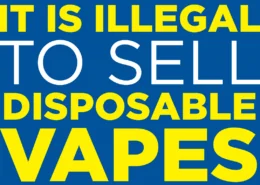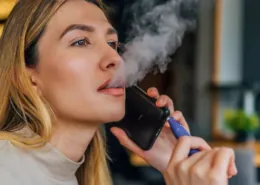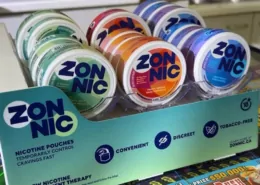31% of Teenagers in Canada Reported Using Vaping Products
In recent years, the use of vaping products among Canadian teenagers has become a growing concern for public health officials, parents, and advocates. To better understand the scope of this issue, let’s take a closer look at the latest data from the Canadian Substance Use Survey and explore the ongoing efforts to curb youth vaping through flavor regulations.
The Canadian Substance Use Survey
The Canadian Substance Use Survey, conducted by Health Canada, provides valuable insights into the prevalence of substance use among Canadians. In the most recent edition, published on December 27th, 2024, the survey gathered responses from 36,180 individuals, including 7,026 youth and young adults aged 15-24.
One of the most striking findings from this survey was the high rate of vaping among Canadian teenagers. According to the data, nearly one-third (31%) of teenagers aged 15-19 reported using a vaping product in the past 30 days. To put this in perspective, previous surveys, albeit using different methodologies, estimated this rate to be between 13% and 15% over the past four years.
- Read more: New Data Reveals Canada’s Teen Vaping Rates Among Highest Globally (posted on 2023)
To understand the significance of this increase, it’s important to consider the potential health risks associated with vaping, particularly for young people whose brains are still developing. Nicotine, the addictive substance found in most vaping products, can have long-lasting effects on brain development, impacting learning, memory, and attention. Additionally, the long-term health consequences of vaping are not yet fully understood, as the practice is relatively new compared to smoking.
The Push for Flavor Regulations
One of the main factors contributing to the popularity of vaping among young people is the wide variety of flavors available, many of which are designed to appeal to youth. From fruity and sweet flavors to more exotic options like “unicorn puke,” these flavored vaping products can make nicotine more palatable and enticing for young users.
Recognizing the role of flavors in driving youth vaping, health advocates have been pushing for regulations to restrict or ban flavored vaping products. In June 2021, Health Canada proposed draft regulations to limit the sale of flavored vaping products, but nearly three and a half years later, these regulations have yet to be finalized.
The delay in implementing flavor regulations has been a source of frustration for many public health experts and advocates. Cynthia Callard, Executive Director of Physicians for a Smoke-Free Canada, emphasizes the urgent need for action, stating, “The new data clearly merits the urgent and undivided attention of our politicians as well as immediate action on long-awaited measures to curb youth addiction to nicotine.“
Similarly, Flory Doucas, Spokesperson and Codirector of the Quebec Coalition for Tobacco Control, argues that the failure to finalize these regulations allows the vaping industry and government to profit from the vulnerability of young people to nicotine addiction. In fact, it was recently revealed that the federal government collects approximately $75 million annually in vaping taxes from high-school students alone.
The Importance of Regulations
As the draft flavor regulations remain in limbo, health advocates are growing increasingly concerned about the potential long-term consequences of inaction. With a potential election on the horizon, there is a risk that years of advocacy efforts could be undermined if the regulations are not finalized soon.
In addition to restricting flavors, experts are calling for a comprehensive approach to curbing youth vaping. This includes measures such as reducing access to vaping products, limiting nicotine levels, and implementing effective education and prevention programs.
The Council of Chief Medical Officers of Health has also weighed in on the issue, reiterating their concern about the high rates of nicotine vaping among Canadian youth. In a statement released in January 2025, they called on the federal government to take swift action to reduce the access and appeal of vaping products among young people.
Conclusion
As the alarming data from the Canadian Substance Use Survey demonstrates, teen vaping has become a significant public health issue that demands urgent attention. By understanding the scope of the problem and the factors driving youth vaping, we can develop effective strategies to protect the health and well-being of Canadian youth.
Finalizing the proposed flavor regulations is a critical step in this process, but it must be part of a comprehensive approach that addresses access, education, and prevention. Only by working together and prioritizing the needs of young people can we hope to reverse the concerning trends in youth vaping and safeguard the future health of our nation.
- Vaping Laws in Maryland – Age, Flavors Ban, Tax & Rules - June 20, 2025
- Belgium Calls for EU-Wide Ban on Flavored E-Cigarettes - June 20, 2025
- Nicotine Pouches Key to Sweden’s Smoke-Free Success for Women - June 20, 2025








